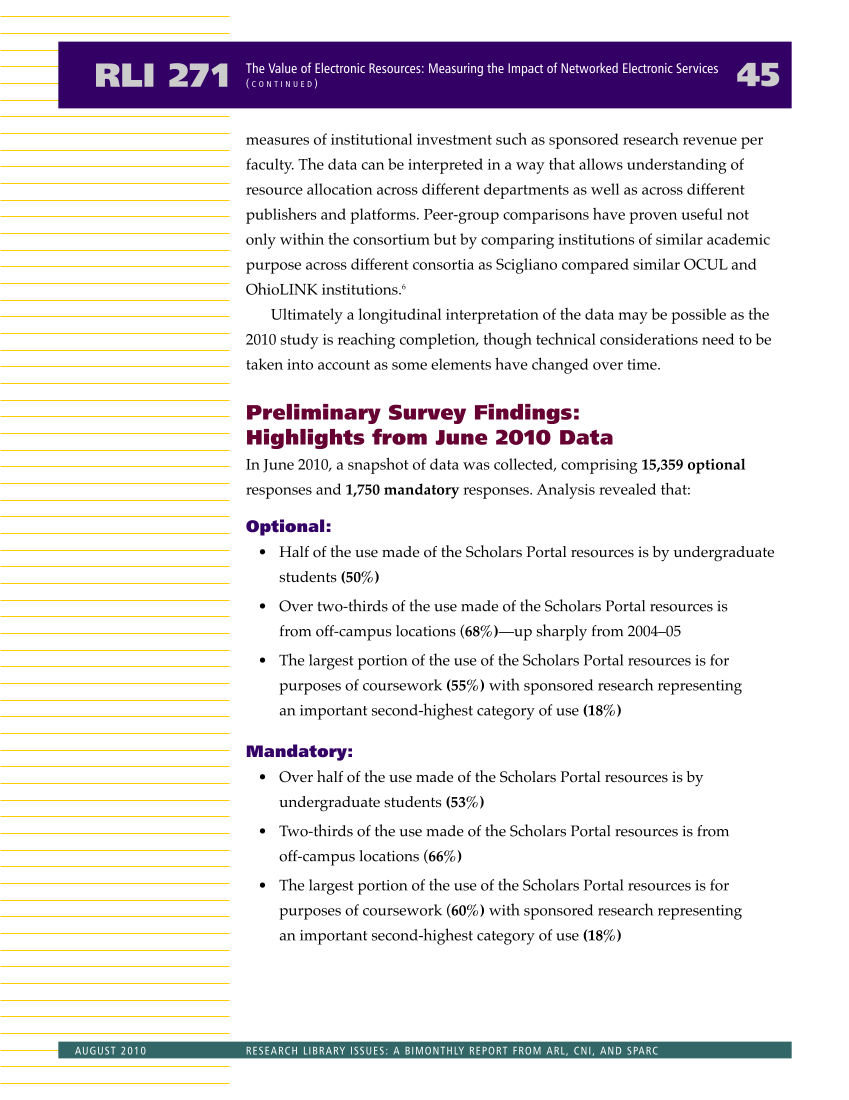measures of institutional investment such as sponsored research revenue per faculty. The data can be interpreted in a way that allows understanding of resource allocation across different departments as well as across different publishers and platforms. Peer-group comparisons have proven useful not only within the consortium but by comparing institutions of similar academic purpose across different consortia as Scigliano compared similar OCUL and OhioLINK institutions.6 Ultimately a longitudinal interpretation of the data may be possible as the 2010 study is reaching completion, though technical considerations need to be taken into account as some elements have changed over time. Preliminary Survey Findings: Highlights from June 2010 Data In June 2010, a snapshot of data was collected, comprising 15,359 optional responses and 1,750 mandatory responses. Analysis revealed that: Optional: • Half of the use made of the Scholars Portal resources is by undergraduate students (50%) • Over two-thirds of the use made of the Scholars Portal resources is from off-campus locations (68%)—up sharply from 2004–05 • The largest portion of the use of the Scholars Portal resources is for purposes of coursework (55%) with sponsored research representing an important second-highest category of use (18%) Mandatory: • Over half of the use made of the Scholars Portal resources is by undergraduate students (53%) • Two-thirds of the use made of the Scholars Portal resources is from off-campus locations (66%) • The largest portion of the use of the Scholars Portal resources is for purposes of coursework (60%) with sponsored research representing an important second-highest category of use (18%) RLI 271 45 The Value of Electronic Resources: Measuring the Impact of Networked Electronic Services ( C O N T I N U E D ) AUGUST 2010 RESEARCH LIBRARY ISSUES: A BIMONTHLY REPORT FROM ARL, CNI, AND SPARC



















































